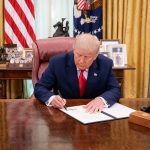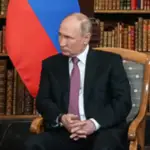In a move that could be straight out of a geopolitical soap opera, former President Trump announced plans to meet with Russian President Vladimir Putin in Saudi Arabia. This proposed meeting comes as part of an ambitious agenda aimed at putting an end to the ongoing Ukraine conflict, which many agree has turned into a bloody, drawn-out disaster for everyone involved. Trump, who seems to relish the role of diplomat-in-chief, indicated this could be the moment to shake things up.
Trump hinted that the Saudi Crown Prince, Mohammed bin Salman, might play the gracious host in this high-stakes showdown. After all, if there’s one place that could use a little diplomatic tension reduction, it’s the desert kingdom with its oil reserves and penchant for extravagant gatherings. These two leaders meeting in Saudi Arabia raises eyebrows, not to mention the question of why they didn’t think of this sooner—like, perhaps, before Russia decided to roll tanks into Ukraine.
Wonderful
What a difference it is, having Trump as president .
In Trump we trust
🙌🏼🇺🇸
Trump says he and Putin have started talks to END war in Ukraine
https://t.co/TpLXSnmxFS— emma rock (@chatswithem) February 12, 2025
Timing remains as elusive as Biden’s long-term strategic vision, with Trump only promising the meeting will happen in the “not too distant future.” This phrase could mean anything from next week to never, but it certainly sounds nice. He suggested this initial rendezvous would kick off a series of talks, with plans for him to gallivant over to Moscow while Putin stops by Washington like he’s visiting a friend’s housewarming party.
Dramatic as ever, Trump’s efforts could signal a thawing relationship between the U.S. and Russia—something that has been as frosty as a Siberian winter since Biden last met with Putin in June 2021. Since then, tensions escalated faster than a political ad in an election year, especially after Biden’s infamous declaration that the Russian leader “cannot remain in power.” Since that bold proclamation, opportunities for dialogue have been few and far between. Under Biden, the strategy seemed to favor heavy sanctions and an isolationist stance, while Trump appears ready to open the door for meaningful conversations—if only to see what’s behind it.
Trump seems to be optimistic about prospects for peace, stating that both Putin and Ukrainian President Volodymyr Zelenskyy are eager to put an end to the conflict. This is a refreshing change from the previous administration’s approach, which prioritized confrontation over dialogue. And while some may question whether progress could be made with convoluted territorial disputes, Trump gave a Nod to pragmatism by suggesting that Zelenskyy might just have to do what’s necessary. Perhaps he should keep this advice handy when it comes to dealing with the self-proclaimed “adversary” that Russian relations have become.
Meanwhile, it’s not all talk of peace and diplomatic dreams; Vice President J.D. Vance and Secretary of State Marco Rubio are set to engage with Zelenskyy in Munich, thus ensuring that the U.S. maintains its standing as a significant player in the ongoing dialogue surrounding Ukraine. In an age where strong defenses are essential, having leaders who are attuned to both diplomacy and decisive action is paramount. If Trump’s meetings yield any sort of tangible results—and hey, miracles do happen—a constructive resolution could beat anything Biden has achieved since taking office. For now, the world watches and waits, popcorn in hand, to see if the former president can deliver a real ceasefire where others failed.




